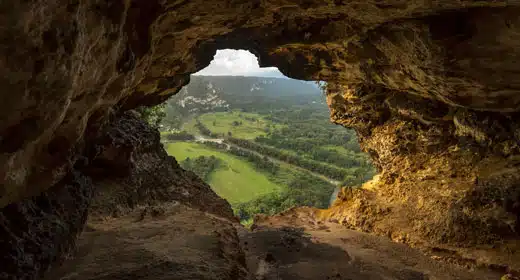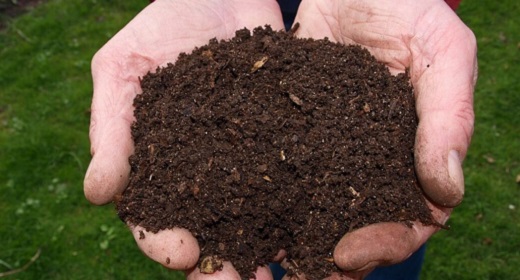by Rebecca Toy: From centuries-old petroglyphs to sacred ceremonial centers in the mountains, Puerto Rico’s Taína Route holds
 the very real history of an Indigenous culture that was nearly wiped out.
the very real history of an Indigenous culture that was nearly wiped out.
Deep within the lush central highlands of Puerto Rico lies a hidden history that goes far beyond the legend of the chupacabra, a mythical, bloodsucking devil dog that has been long blamed for the killing of livestock and pets.
This remote region is a prime hunting ground for cryptozoologists—people who search for mythical creatures—but for travelers looking for a more tangible adventure, a journey through these mountains reveals an often overlooked experience: the Taína Route.
From ancient petroglyphs secreted away in caves by the sea to sacred ceremonial centers in the mountains, this 40-mile-long trail explores the culture of the island’s Indigenous Taíno community, using Highway 10 to cut a path from Arecibo on the north shore to Ponce on the southern coast.
Christina Gonzalez, a researcher with the Smithsonian Institution’s Caribbean Indigenous Legacies Project, writes that understanding the Taíno way of respecting the living world is not just about the past or specific sacred spaces, but also the survival of the planet. “Whatever becomes of Taíno resurgence moving forward, its survived and rekindled spiritual expressions point to a desired and needed world where the future is ancestral, the future is ancient, the future is Atabey,” one of two supreme ancestral spirits in the Taíno religion.
Since 2016, a collaboration between archaeologists, the Institute of Puerto Rican Culture, and local conservationists has been trying to promote this legacy through the heritage trail. As Taíno groups call for more inclusion in how their narrative is told, there are emerging opportunities for travelers to immerse themselves in Taíno culture. Whether you rent a car and go at your own pace or join a tour, here’s where you can connect with the customs that helped shape this complex island—and where to keep an eye out for chupacabras along the way.
Wild and sacred spaces
Some of the highest concentrations of petroglyphs on the island reside on the Taína Route, starting from the sea cave Cueva del Indio near northern Arecibo, a 45-minute drive from San Juan, to a ceremonial site on the southern coast near Ponce. More than intriguing symbols, these seventh to 15th-century etchings of faces, animals, and divine figures give insight into the mostly oral Taíno history. While the coastal sites along the route endpoints are worth visiting, the verdant middle section captures the essence of the community’s spiritual traditions.
In a mountain clearing just west of the trail’s central city of Utuado, multiple courtyards are lined by petroglyph-etched granite stones, some at least waist-high, in the Caguana Ceremonial Indigenous Heritage Center. These plazas, called bateyes, are considered sacred venues for ritual dances, devotional practices, and ceremonial ball games.
“Taíno literally means ‘good people,’” says Roberto Múkaro Agüeibaná Borrero, president of the United Confederation of Taíno People (UCTP). “The way you interact and the ceremonies the community participated in is what made them ‘Taíno.’”
The petroglyphs at Caguana are also some of the most vivid across the Antilles islands, according to Yvonne Narganes, director of the Center for Archaeological Research at the University of Puerto Rico. “They are impressive, hinting at a very old and complex mythological tradition,” says Narganes.
The most famous is the crouching figure of Atabey, described as the mother of creation and the consciousness of the earth. Her prominent figure is a crucial reminder that everything is alive and connected for the Taíno.
To the east is the region of Jayuya, named after the Taíno chief Hayuya and known as the Indigenous capital of the island. Here Tres Picachos, the three-peaked mountain revered by the Taíno, looms over one of the route’s most popular spots. A well-marked walk takes travelers to a 13-foot-tall boulder covered in petroglyphs called La Piedra Escrita, or the “Written Stone.” It’s not just the size of this artifact or the vast number of petroglyphs near its top that draws crowds. The Written Stone sits in the Saliente River, creating a natural swimming pool that helps visitors to understand the Taíno’s respect for an interconnected world.
Just down the road is the Museo el Cemí. The design of this three-pointed museum matches the artifacts it displays–the cemí. Typically carved from stone, these spiritual figurines represent and embody ancestral guardian spirits. Like the sacred three mountain peaks, most cemís also have three points representing creation and the overlapping spirit realms of the living and dead.
The route ends at Ponce, near the region of Indios where a large population of Taíno lives today. Rivaling Caguana in size, excavation continues at the Tibes Indigenous Ceremonial Center. So far archaeologists have discovered pre-Taíno and Taíno artifacts dating from A.D. 25, which can be explored at the on-site museum.
Folklore, spirits, and legends
Vampiric creatures and ghouls have haunted the “Island of Enchantment” long before Puerto Rico was center stage for an international chupacabra hunt in 1995. The Taíno believed in hupia, or the spirits of the dead. These shapeshifters could take the form of owls, bats, and humans that would emerge at night with sometimes sinister motivations. The most famed hupia, an urban legend popularized in the 1990 novel Jurassic Park, was a snarling vampire beast who kidnapped small children after sunset.
In 1975 near Moca, Puerto Rico, a bloodsucking, bat-like humanoid reportedly killed livestock. A new vampire cryptid called the Gargoyle emerged in 2018 near Barceloneta. This two-legged, winged predator smelled of sulfur like its predecessor, the chupacabra. Whether people believe in the beasts or not, the legend of the chupacabra took root in these hills, adding to the history of lands that still ring of folkloric magic.
Future possibilities
According to Melina Aguilar, a history tour guide with Isla Caribe, the existence of Puerto Rican historical sites older than 500 years is startling for most visitors–and many Puerto Ricans. “It’s not just that people are surprised by what they see when they get here, it’s that it’s even here to be seen in the first place,” she says. “And there’s more underground.”
Unexcavated sites and further restoration need more funding, but the devastating effects of Hurricanes Maria in 2017 and Fiona in 2022 hamper growing infrastructure. The already isolated regions along the trail are some of the last to have utilities restored and damage cleared.
But growth is possible, particularly as Taíno activists seek co-management to bring ancestral knowledge to the sites. “Why is it that people who do not have a connection to our heritage are able to tell us who we are and how to present our heritage?” says Agüeibaná Borrero. “We feel as Taíno people that we have obligations and responsibilities to the land and to our ancestors.”
Borrero says the UCTP and other organizations are working on creating a centralized community center run by Taíno people and a directory of Taíno businesses. He invites visitors interested in connecting with locals for tours, oral histories, and cultural insights to reach out to the UCTP.








































